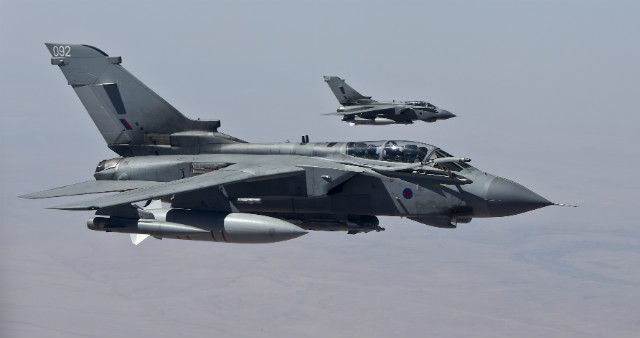Further detail on the UK Ministry of Defence’s November Strategic Defence & Security Review (SDSR) has revealed the retirement of a Panavia Tornado GR4 squadron will be pushed back to 2018, from the previously announced 2017 date.
Last August, defence secretary Michael Fallon said a delayed retirement from 2016 until March 2017, of the Royal Air Force’s 12 Sqn, would allow the type to continue operating until the Eurofighter Typhoon was able to fully take over the ground-attack role in Iraq and Syria. However, the next retirement of a Tornado squadron has now been pushed back further, to 2018.
“We will extend the third Tornado ground-attack squadron in service until 2018 to continue the fight against Daesh [Islamic State] and be ready for other tasks, then retire the remaining two squadrons of Tornado in 2019,” an SDSR factsheet released by the MoD on 15 January says.
The Tornado is proving its worth against Islamic State militants in the Middle East and the demand for it is high; 12 Sqn was returned to service in January 2015 to join Operation Shader after originally disbanding in 2014 after the withdrawal from Afghanistan. Three squadrons are required to support the operation, with one deployed at any given time, one in a preparation role and another on stand down.
The recent SDSR also noted the UK will acquire the planned 138 Lockheed Martin F-35s over the life of the programme, and will “buy some of these aircraft more quickly than previously planned, creating an additional frontline squadron by 2023”, according to the factsheet.
The Tornado GR4’s replacement, the Typhoon, will also see an additional two frontline squadrons formed to support the type until 2040, with more investment into integrating an active electronically scanned array radar. With the integration of the MBDA Brimstone air-to-surface missile in 2017, the newer type should be able to begin adopting the ground-attack role of the Tornado, which began carrying the weapon in Syria this month.

Crown Copyright
The factsheet also confirms the UK’s commitment to developing unmanned combat air vehicle technology, specifically in collaboration with France – the two nations are involved in the bilateral Future Combat Air Systems programme – and the USA.
“We will work with France to develop an advanced Unmanned Combat Air System technology demonstrator, and with the United States to mature other high-end technologies,” it says. “Additionally, we will pursue a national technology programme to maintain the UK’s position as a global leader in this area.”
Under its Protector programme, the UK will see its fleet of armed UAVs doubled in the 2020 timeframe, from a capability currently provided by the General Atomics Aeronautical Systems MQ-9 Reaper.
Source: FlightGlobal.com



















